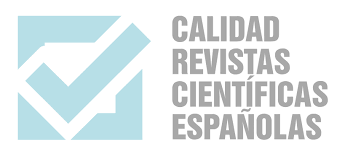Torture and its Division of Labor
Keywords:
Torture, human rights, war crimes, crimes against humanity, Tortura, derechos humanos, crímenes de guerra, crímenes contra la humanidadAbstract
So as to immunize the Bush White House against cases involving the abuse of detainees held under the war on terror, its legal advisors warped laws prohibiting torture. More recently, evidence reveals that the CIA colluded with the American Psychological Association (APA) to rewrite an ethics policy that would enable psychologists to participate in harsh interrogations as well as torture. The shift from consultant to that of a hands-on operational psychologist marks a significant development in what is described herein as clinical torture. Moreover, the adoption of a new role in the interrogation and torture program demonstrates the dynamics of drift in the atrocity triangle that features perpetrators, victims, and bystanders. Specifically, psychologists progress from bystanders to becoming perpetrators in ways that abandon their obligation to do no harm. This article explores the nuances of the atrocity triangle and the atrocity-producing situation set forth by Stanley Cohen and Robert Jay Lifton. Implications to the prosecution of group offenders are discussed throughout.
Con el objetivo de inmunizar la Casa Blanca de Bush frente a los casos relacionados con abusos a detenidos desarrollados en el marco de la guerra contra el terrorismo, sus asesores legales pervirtieron las leyes que prohibían la tortura. Más recientemente, se ha demostrado que la CIA confabuló con la Asociación Americana de Psicología, para reescribir su código de conducta ética y permitir a psicólogos participar en interrogatorios agresivos y en torturas. El cambio de consultor a psicólogo operacional directamente implicado marca un importante desarrollo en lo que se describe en este artículo como tortura clínica. Además, la adopción de un nuevo rol en el programa de interrogación y tortura demuestra la dinámica del rumbo del triángulo de atrocidad en el que están implicados responsables, víctimas y testigos. Los psicólogos en concreto pasan de ser testigos a convertirse en responsables, dejando de lado su obligación de no dañar. Este artículo analiza los matices del triángulo de atrocidad y la situación de crear atrocidad, expuestos por Stanley Cohen y Robert Jay Lifton. A lo largo del texto se analizan las implicaciones en los juicios a criminales pertenecientes a bandas organizadas.
DOWNLOAD THIS PAPER FROM SSRN: https://ssrn.com/abstract=2871636
Downloads
Global Statistics ℹ️
|
283
Views
|
468
Downloads
|
|
751
Total
|
|
Downloads
Published
How to Cite
Issue
Section
License
OSLS strictly respects intellectual property rights and it is our policy that the author retains copyright, and articles are made available under a Creative Commons licence. The Creative Commons Non-Commercial Attribution No-Derivatives licence is our default licence and it regulates how others can use your work. Further details available at https://creativecommons.org/licenses/by-nc-nd/4.0 If this is not acceptable to you, please contact us.
The non-exclusive permission you grant to us includes the rights to disseminate the bibliographic details of the article, including the abstract supplied by you, and to authorise others, including bibliographic databases, indexing and contents alerting services, to copy and communicate these details.
For information on how to share and store your own article at each stage of production from submission to final publication, please read our Self-Archiving and Sharing policy.
The Copyright Notice showing the author and co-authors, and the Creative Commons license will be displayed on the article, and you must agree to this as part of the submission process. Please ensure that all co-authors are properly attributed and that they understand and accept these terms.


















